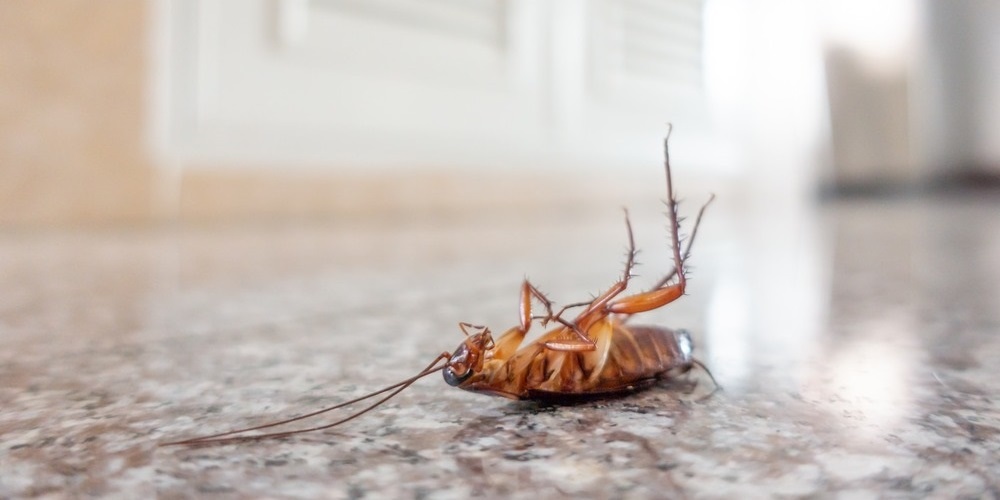
Cockroaches continue to be a nuisance in Florida, where 30.4% of households have at least one infestation yearly. Understanding the lifecycle of cockroaches is crucial in effectively implementing roach extermination strategies. From their egg stage to adulthood, the lifecycle of cockroaches has a series of transformations, adapting to various environments.
Cockroach Season in Florida
The cockroach activity in South Florida fluctuates throughout the year depending on humidity and warmth. Here’s a breakdown of their presence for planning an effective roach pest control strategy:
- Cockroach number multiplies significantly during the mating season, which lasts from April to June.
- Temperatures peak in South Florida from July to September, when cockroach activity is in full swing.
- The activity declines as winter approaches, and cockroaches look for shelters inside your home.
- From January to March, cockroach activity will be at its seasonal lowest.
What Are Some Signs of Cockroach Infestation?
Here is how to check whether cockroaches have infested your home or workplace.
Sightings
Cockroaches hide during the day. So, if you spot one during daylight, it’s likely there are more lurking in the shadows.
Droppings
Cockroach droppings resemble small, black pepper grains or cylindrical pellets. You may find them near food sources, cabinets, or dark corners.
Smear Marks
Cockroaches produce oily secretions that can leave smears or streaks along walls, baseboards, and other surfaces as they navigate your home.
Unpleasant Odor
An unpleasant, musty odor can indicate a large cockroach population. It may be particularly noticeable in confined spaces or areas where the infestation is concentrated.
Shed Skins
Cockroaches molt their exoskeletons as they grow. Finding discarded exoskeletons, which are translucent and brownish, suggests an active infestation.
Egg Casings
Cockroach eggs are enclosed in protective cases known as ootheca. These casings are typically brown or reddish-brown and can be found in hidden areas such as behind furniture, cracks, or appliances.
Lifecycle of Cockroaches
The fascinating lifecycle of cockroaches has three main stages: egg, nymph, and adult. On average, the cockroach lifespan is 180 days for adult females and 160 days for adult males.
The Egg Stage
The first stage in the lifecycle of a cockroach involves female cockroaches laying eggs in protective cases called an ootheca. These oothecae are often hidden in cracks and crevices, ensuring the eggs are safe from harm.
Each ootheca contains multiple eggs, ranging from 10 to 50. The egg cycle of cockroaches involves incubation of 1-2 months, depending on the species and environmental conditions.
The Nymph Stage
A nymph emerges in the second stage of the life cycle of a cockroach that resembles an adult. It is pale in color and gradually darkens after molting.
Molting is a crucial part of their growth process, allowing nymphs to shed their exoskeletons and develop larger ones. Nymphs molt several times before reaching adulthood.
During each molting phase, nymphs become more extensive, and their wings develop. They are highly active and seek food and shelter. Nymphs can survive for several weeks without food but require water to sustain themselves. They undergo multiple molts, shedding their exoskeletons each time until they reach maturity.
The Adult Stage
The last stage in the lifecycle of cockroaches is adulthood, developing wings and reproductive capabilities. Adults are dark brown or black with flattened bodies and long antennae. They are adaptable and can survive in a wide range of environments.
Cockroaches feed on anything from decaying matter to leftover food. They have a high reproductive potential, and a single female can produce hundreds of offspring during her lifetime.
How to Control Pest Infestations in South Florida?
German and American roaches are the most common in Florida and thrive in warm & humid conditions. Let’s discuss how you can effectively eradicate these roaches from your homes and workplaces.
Close Door and Window Gaps
American roaches can fly and are attracted to lights. If they see the lights inside your room, they try to get near them and use the gaps in your windows and doors to do that. Seal all the window and door gaps so roaches can’t sneak through and infest your place.
Check Boxes and Sacks
Contrary to American roaches, German roaches depend on humans for survival. Hence, they do not live outdoors and are usually transferred from one place to another by the inhabitants. Examine your sacks, boxes, and secondhand furniture to find any signs of roaches.
Don’t Feed Them
Nobody feeds roaches directly, but you may be doing it indirectly by not emptying your pets’ dishes. When left unattended on the floor, roaches see an opportunity and feast on them. Similarly, don’t leave anything on the kitchen counter overnight.
Get Rid of Moisture
Dampness and roaches are best friends, as the latter thrive in a humid environment. Here are some of the places in your home prone to roach infestation due to their dampness:
- Refrigerator
- Sink cabinet
- Plumbing leaks
- Air conditioner
Go for a Professional Cockroach Exterminator
Due to the short cockroach life cycle, their population multiplies fast, rendering home remedies quite ineffective. Therefore, hiring a professional roach exterminator service like Gregory’s Pest Control is better to give you peace of mind. We thoroughly inspect your home or business and devise a customized cockroach treatment.
Our qualified staff follows the standard cockroach pest control guidelines and provides 100% satisfaction. We understand the lifecycle of cockroaches and serve people residing in various areas of Florida. So, contact us today to get rid of roaches, and we’ll do everything to get rid of them.

Paul Gregory
Owner/President of Gregory’s Pest Control
I’m a 2nd generation pest control owner who started working for my father in 1999. I was raised in South Florida and feel blessed to call it home for my entire adult life. As a long-term Florida resident, I recognize the challenges of controlling the many different pests that thrive in our subtropical climate. In particular, I understand how difficult it can be to prevent pests from invading our homes and businesses. By helping families solve their pest problems so they can live safer, more comfortable lives, I feel I am also meeting my family’s commitment to help our community. When I’m not out fighting pests, you can find me on the golf course or out on a soccer field where I have been fortunate enough to coach soccer to kids of all ages for the past 20 years.




